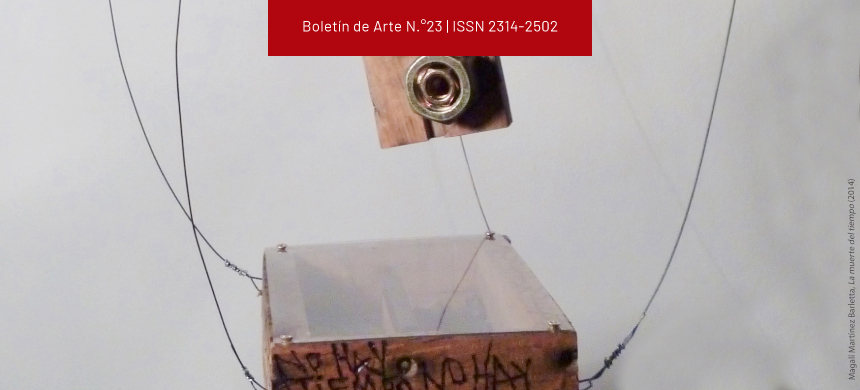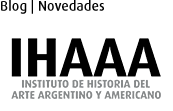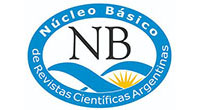Curatorial Process for Dance at The Museum
Dance at The MPBA Emilio Pettoruti
DOI:
https://doi.org/10.24215/23142502e040Keywords:
Dance, museum, curationAbstract
The series Danza en el Museo which takes place at the Museo de Bellas Artes Emilio Pettoruti (MPBA) since 2016 in La Plata city, Argentina, presents a valuable curatorial work which enables the dialogue between performative and visual arts, creating a new interdisciplinary work in each performance. In this article we analyze the series characteristics and achievements. We also discuss the way dance is legitimated by the institution, and the role the museum has in making local dance visible by means of the curatorial work.Downloads
References
Antueno, M. E. de, Mac Donnell, E. y Sánchez Pórfido, P. (septiembre de 2006). La gestión de Emilio Pettoruti en la colección del Museo Provincial de Bellas Artes (1930-1947) [Objeto de conferencia]. 4.a Jornadas Nacionales de Investigación en Arte y Arquitectura en Argentina, La Plata, Argentina. http://sedici.unlp.edu.ar/handle/10915/38764
Bardet, M. (2018). The paradox of dancing in a museum [La paradoja de bailar en un museo]. The Pew Center for Arts & Heritage. https://www.pewcenterarts.org/post/paradox-dancing-museum
Bishop, C. (2014). The Perils and Possibilities of Dance in the Museum: Tate, MoMA, and Whitney. Dance Research Journal, 46(3), 62-76. https://doi.org/10.1017/S0149767714000497
Bishop, C. (2021). La caja negra, el cubo blanco, la zona gris. Las exhibiciones de danza y la atención de la audiencia. Tropelías, (35), 43-69. https://papiro.unizar.es/ojs/index.php/tropelias/article/view/5056
Bourriaud, N. (2009). Postproducción. Adriana Hidalgo editora.
Campanario, C. (2013). Prácticas curatoriales en artes escénicas. Telondefondo. Revista de Teoría y Crítica Teatral, 9(18), 229-233. http://revistascientificas.filo.uba.ar/index.php/telondefondo/article/view/6650
Feldman, J. (octubre de 2014). La expansión de lo curatorial [Objeto de conferencia]. 18.a Jornadas Nacionales de Investigadores en Comunicación, Ciudad Autónoma de Buenos Aires, Argentina. http://repositorio.una.edu.ar/handle/56777/1237
Menacho, M. I. (2019). Fakir. Emergency INDEX, 8, 64-65. https://emergencyindex.com/volume/2018#2018-064-065
Orduña Cruz, S. (2016). Move: de espectador a bailarín. La irrupción de la danza en el espacio expositivo [Tesis de maestría, Facultad de Filosofía y Letras de la Universidad Nacional Autónoma de México]. http://132.248.9.195/ptd2016/abril/0742976/Index.html
Pérez Gali, A. (2013). ¿Pueden hablar los bailarines? Aimar Pérez Gali. http://aimarperezgali.com/pages/sudando.html
Pérez Hernández, R. (2019). Danza en el Museo. Potencialidades expandidas [Tesis de maestría, Universidad Politécnica de Valencia]. https://riunet.upv.es/handle/10251/129901
Pettoruti, E. (1931). Nuestro programa. Recreación del Museo. Crónica de Arte, 1(1), 1-3. Plataforma Nodos. (2019). Página principal. http://plataformanodos.org/
Rogovsky, D. (10 de marzo de 2018). Fakir. Medium. https://medium.com/@dianarogovsky/fakir-c33bda7d0dd8
Downloads
Published
How to Cite
Issue
Section
License
Copyright (c) 2022 Florencia Riafrecha

This work is licensed under a Creative Commons Attribution-NonCommercial-ShareAlike 4.0 International License.
According to these terms, the material can be copied and redistributed by any means or in any format as long as a) the author and original source of the publication are quoted (magazine and URL of the work), access to the license is provided and whether changes have been made is mentioned; and b) the material is not used for commercial purposes.
The cession of non-exclusive rights means that after the publication (post print) in Boletín de Arte the authors can publish their work in any language, means and format; in such cases it must be mentioned that the material was originally published in this magazine.
Such cession also means the authorization of the authors for the work to be collected by SEDICI, the institutional archive of the National University of La Plata, and to be spread in the databases that the editorial team considers appropriate to increase the visibility of the publication and its authors.
Moreover, the magazine encourages the authors to deposit their productions in other institutional and thematic archives under the principle that offering the society the scientific and academic production without any restrictions contributes to a greater exchange of the global knowledge.
































